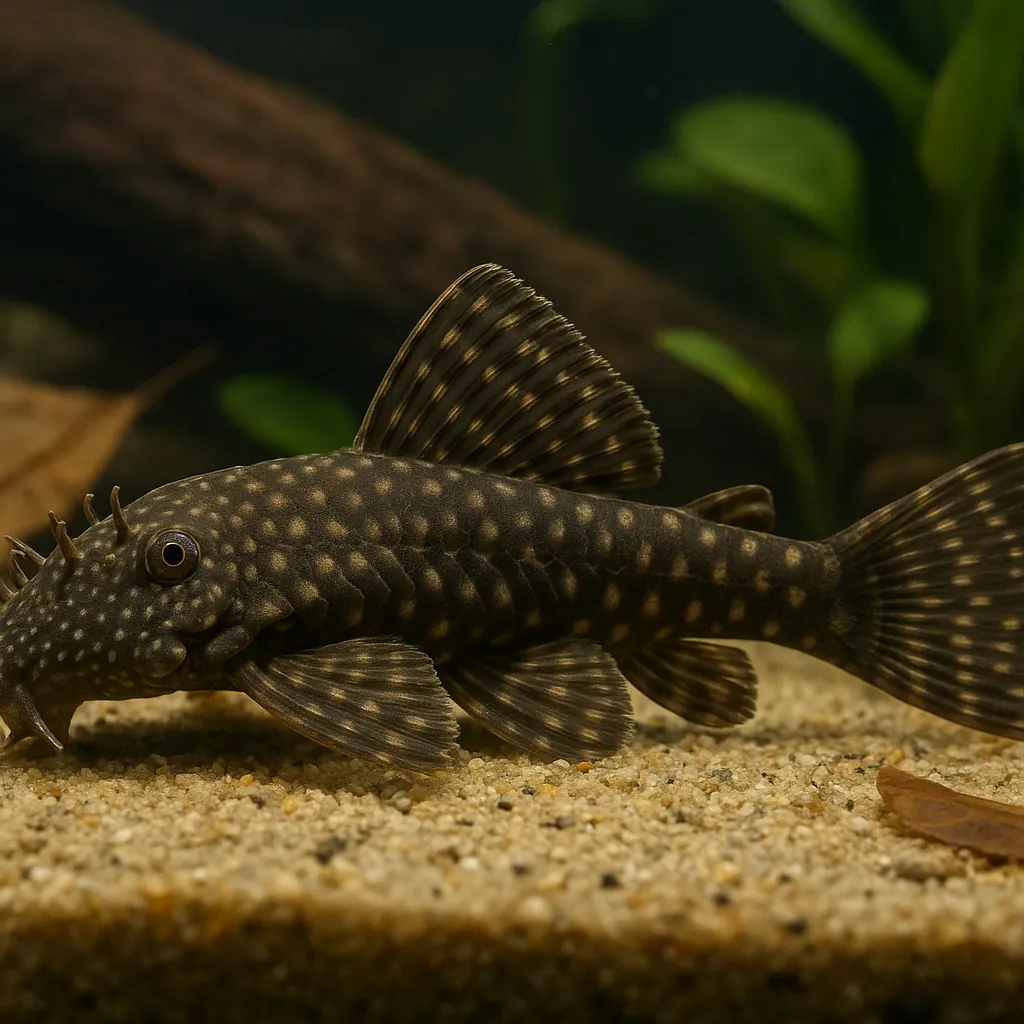
Bristlenose catfish
Introduction
The Bristlenose catfish, scientifically known as Ancistrus cirrhosus, is a popular choice among aquarists due to its manageable size, peaceful temperament, and unique appearance. Characterized by distinctive bristle-like appendages on their snouts, these catfish are not only fascinating to observe but also serve a practical role in aquariums by helping control algae growth. Their hardy nature and straightforward care requirements make them an excellent option for both novice and experienced fishkeepers.
What makes the Bristlenose catfish a good choice for beginners?
Their hardy nature and straightforward care requirements make them an excellent option for both novice and experienced fishkeepers.
Do Bristlenose catfish help with algae control?
Yes, they are known for their algae-eating habits, which can help maintain a cleaner aquarium environment.
Care and Environment
Proper care for Bristlenose catfish involves attention to tank size, water parameters, filtration, lighting, feeding, and tank setup.
What is the minimum tank size for a Bristlenose catfish?
A minimum tank size of 60 liters is recommended to provide adequate space and maintain water quality.
What are the ideal water parameters for Bristlenose catfish?
They thrive in temperatures between 22–26°C, with a pH range of 5.8–7.6, and water hardness between 4–18°N.
Effective filtration is crucial, as Bristlenose catfish produce a significant amount of waste. A robust filter will help maintain water quality and provide the moderate water flow they prefer. While they are nocturnal and do not require intense lighting, ensuring a natural day-night cycle is beneficial.
What should I feed my Bristlenose catfish?
They are primarily herbivorous and should be fed a diet rich in plant-based foods, including algae wafers and blanched vegetables like zucchini and peas. Occasional protein-rich foods such as bloodworms can be offered.
In terms of tank setup, provide plenty of hiding spots using caves, driftwood, and plants to mimic their natural habitat. Driftwood is particularly important, as it not only offers shelter but also serves as a surface for algae growth, contributing to their diet. A soft substrate like sand or fine gravel is recommended to protect their sensitive barbels.
Are Bristlenose catfish sensitive to water changes?
While they are hardy, it's important to perform regular water changes to maintain optimal water quality and prevent stress.
Origin and Habitat
Bristlenose catfish are native to the freshwater rivers and streams of South America, particularly within the Amazon River Basin. They inhabit fast-flowing waters with abundant vegetation and submerged driftwood, which provide both food sources and shelter. The natural environment features soft, slightly acidic to neutral water with moderate temperatures, conditions that should be replicated in the home aquarium to ensure their well-being.
Where do Bristlenose catfish originate from?
They are native to the freshwater rivers and streams of South America, particularly within the Amazon River Basin.
What type of environment do they prefer?
They inhabit fast-flowing waters with abundant vegetation and submerged driftwood, providing both food sources and shelter.
Temperament and Compatibility
Bristlenose catfish are generally peaceful and make excellent additions to community aquariums. They coexist well with a variety of tank mates, including tetras, guppies, mollies, and corydoras. However, it's important to note that male Bristlenose catfish can become territorial, especially during breeding periods. To minimize aggression, ensure the tank is spacious and provides multiple hiding spots.
Can Bristlenose catfish be kept with other bottom dwellers?
Yes, they can coexist with other peaceful bottom dwellers like corydoras, provided there is enough space and hiding spots to prevent territorial disputes.
Are they suitable for community tanks?
Yes, their peaceful nature makes them suitable for community tanks with other non-aggressive fish species.
Interesting Facts
Bristlenose catfish are known for their unique bristle-like appendages, which are more prominent in males and believed to play a role in attracting females during breeding. They are also effective algae eaters, helping to keep aquariums clean. Additionally, they have the ability to breathe air, allowing them to survive in low-oxygen environments by gulping air at the water's surface.
Why do male Bristlenose catfish have bristles?
The bristles are believed to play a role in attracting females during breeding.
Can Bristlenose catfish breathe air?
Yes, they have the ability to breathe air, allowing them to survive in low-oxygen environments by gulping air at the water's surface.
Sources
All information in this article has been gathered from the following reputable sources:
Overview
Recommended Tank Size 26.4 Gallons (for groups of 3 or more) |
Minimum Group Size 1 |
Minimum Tank Volume 15.9 Gallons |
Maximum Adult Length 5.9 inches |
Average Adult Length 4.7 inches |
Shoaling (6+ required) No |
Preferred Water Type Freshwater, soft to moderately hard, slightly acidic to neutral |
Temperature Range (°C) 22–26 |
pH Range 5.8–7.6 |
Water Hardness (dGH) 4–18 |
Typical Lifespan (years) 5 years |